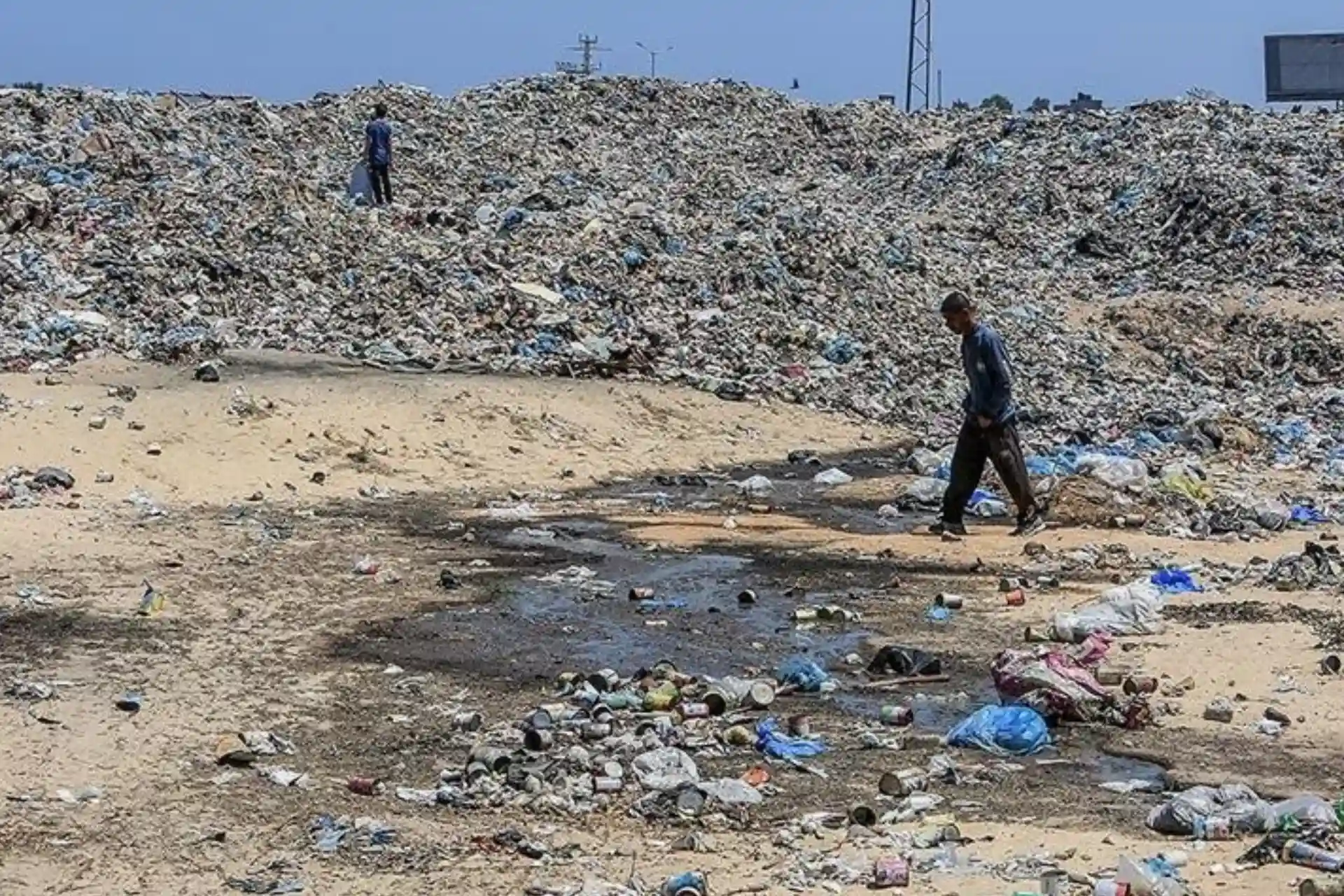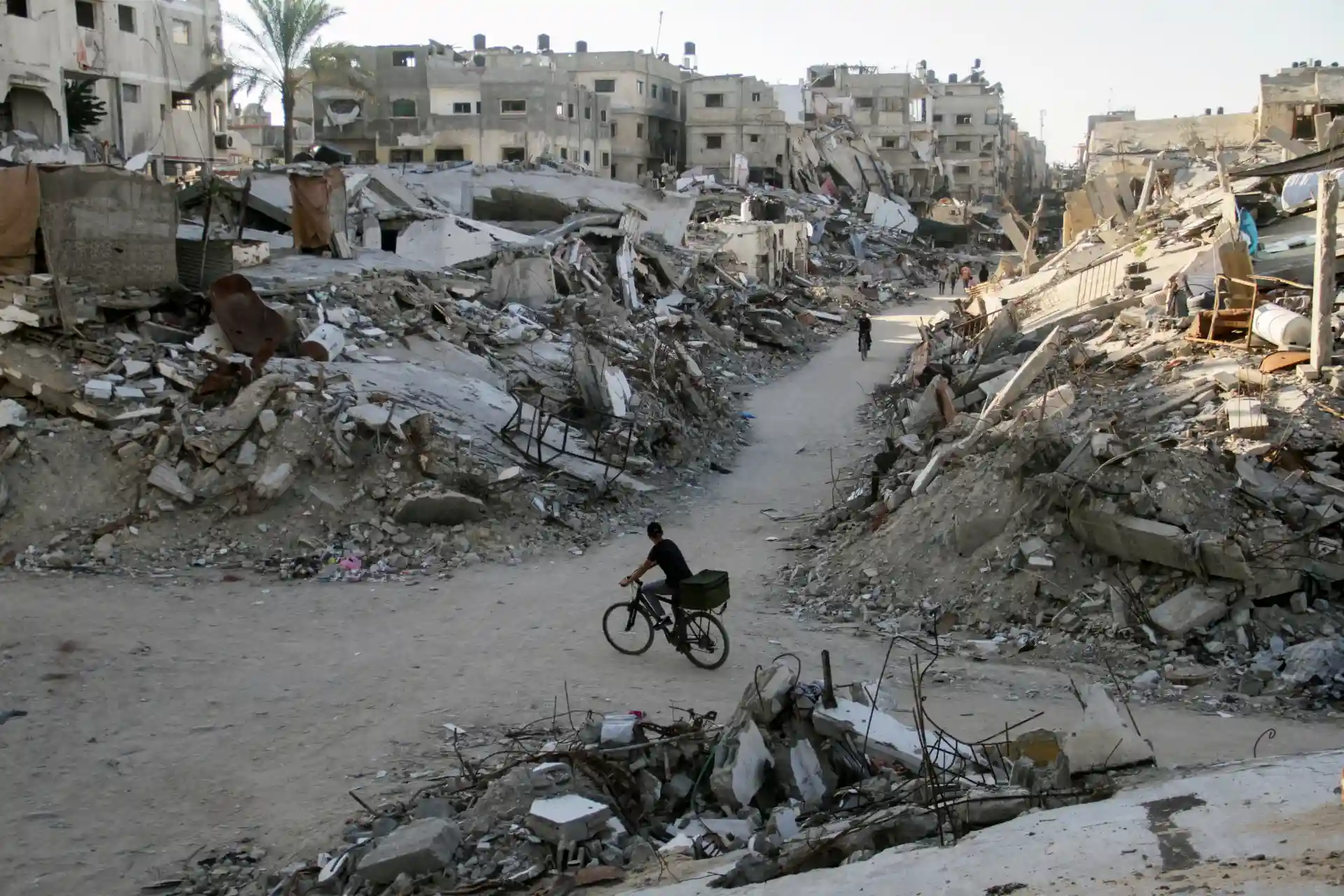In one year, Israel destroyed not only the Palestinians in Gaza, but also the environment
Not only millions of Palestinians, but also mother nature is suffering from the massacre that Israel has been carrying out in Gaza for a year. In the first 120 days of the war, as a result of Israeli attacks, up to 652 thousand tons of carbon dioxide gas were released into the atmosphere, which is more than the annual emissions of 26 countries.
Israel, which has been conducting attacks on the Gaza Strip for a year, is causing a humanitarian crisis by using various methods, including white phosphorus bombs, and is also causing extensive destruction of the environment , writes Anadolu .
As a result of Israel's attacks on Gaza on October 7, 2023, more than 40,000 people were killed, about 100,000 were injured, and thousands of people are forced to live in tents built by humanitarian organizations or in schools and hospitals that have been turned into shelters. In addition to the humanitarian crisis, the ongoing explosions are causing environmental damage.
On the 200th day of the attacks, Israel announced that it had dropped 75,000 tons of bombs on Gaza. This is about 6 times more than the number of bombs dropped on Hiroshima during World War II.
According to a study by Queen Mary University of London, 54-66 percent of buildings in Gaza were damaged or completely destroyed by Israeli attacks. In the first 120 days, including February 2024, Israeli attacks released 420,000 to 652,000 tons of carbon dioxide equivalent into the atmosphere , more than the annual carbon dioxide emissions of 26 countries.
One of the most important factors causing environmental damage as a result of attacks is the use of white phosphorus bombs, which are prohibited by international law.
Amnesty International has documented and provided ample evidence that the Israeli army has used white phosphorus artillery shells in heavily populated areas of Gaza.
White phosphorus, which can remain in soil and water for years, kills plants it comes in contact with in the short term, and acts as a fertilizer in the long term, causing excessive growth of plants, algae, and algae.
The water crisis is deepening
Israel is targeting not only military targets, but also critical infrastructure in Gaza. As a result of attacks on electricity networks and water pipelines, a major water crisis has arisen in Gaza. The United Nations Relief and Works Agency for Palestine Refugees in the Near East (UNRWA) reported that approximately 67 percent of water and sanitation facilities were destroyed or damaged in the first eight months of attacks.
According to the "Water Crimes" report released in July by the international aid agency Oxfam, while a person needs 15 liters of water a day to survive in an emergency, Gazans need 4.74 liters to meet their basic needs such as eating, cleaning and bathing. has water. Compared to the period before the Israeli attack, this figure represents a 94 percent decrease in the amount of water available to Gazans.
The water crisis, exacerbated by Israel's cutoff to the Gaza Strip, is forcing residents to rely on contaminated well water. Gazans have been waiting for hours to get water Israel repeatedly attacked the queues, including killing two children who were returning home with water bottles on October 17, 2023.
Garbage cannot be collected
According to the report "War and Garbage in Gaza" published in June by the Dutch NGO PAX for Peace, at least 225,000 tons of solid waste have accumulated in the streets and fields around the Gaza Strip. Waste collection vehicles were damaged in the attacks, and the Israel Defense Forces ( IDF ) blocked access to waste collection sites. In Gaza, where more than 85% of the population has been displaced since the start of the conflict, 62% of the buildings were destroyed after the attacks and at least 100,000 tons of solid waste accumulated in the city alone.
The risk of epidemic diseases
Inability to dispose of medical waste, release of chemicals and radioactive substances into soil and groundwater, hepatitis B and C causing the spread of such diseases. First of all, chemicals enter water and soil from landfills , and then enter the bodies of people and animals through the food chain as a result of agricultural activities in these areas. According to a statement issued by the Palestinian Ministry of Health on March 4, 2024, about 1 million infectious diseases have been recorded in the Gaza Strip, home to approximately 2.3 million Palestinians , and there are not enough medical facilities for treatment.
The carbon burden of devastation
The United Nations has said it could take years to clean up the 23 million tons of rubble left by Israel's offensive in the Gaza Strip. Considering that between 156,000 and 200,000 structures, including civilian homes, hospitals and schools, were damaged or completely destroyed during Israel's attacks on Gaza, rebuilding them would release between 46.8 million and 60 million tons of carbon dioxide, according to the UN . This exceeds the annual carbon dioxide emissions of more than 135 countries and equals the emissions of Sweden and Portugal.



